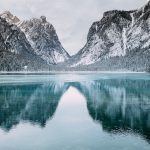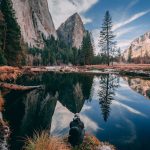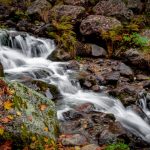Table of Contents
Exploring the Peaks of Mount Everest
Mount Everest is the world’s tallest mountain, standing at an awe-inspiring 8,848 meters above sea level. For centuries, it has been the ultimate challenge for mountaineers and adventurers alike. The mountain has claimed more than 250 lives and has been conquered by a select few. To this day, its peaks remain shrouded in mystery, beckoning intrepid explorers to take on the greatest of challenges and make their own mark in the history of mountaineering.
In this blog post, we will explore the peaks of Mount Everest and the breathtaking beauty they contain. From the unique alpine ecosystem to the extreme climatic conditions, the peaks of Mount Everest offer an unforgettable experience. We will also look at the various routes climbers take to reach the summit and the equipment they use to make their ascent a successful one.
The Unique Alpine Ecosystem
The peaks of Mount Everest are home to a unique alpine ecosystem. At higher altitudes, the climate is cold and dry and the air is thin. This environment is inhospitable to most plants and animals, but a few species have managed to adapt to the extreme conditions. These include yaks, Himalayan tahr, and blue sheep. They can be spotted grazing on the slopes of the mountain, alongside the majestic snow leopards.
The alpine ecosystem of Mount Everest also includes several species of birds, such as the snow partridge and the snow finch. The finches are especially adaptable, and can be found nesting in the crevices of the rocks and in the snow drifts. Other birds include the golden eagle, the lammergeier, and the red-billed chough.
The icy landscape of Mount Everest is also home to several species of rare plants. These include species of rhododendron, primrose, and juniper. The rhododendrons are especially hardy, and can be seen in bloom even in the most extreme conditions.
The Routes To The Summit
In order to reach the summit of Mount Everest, climbers must take one of several routes up the mountain. The most popular route is the Southeast Ridge, which begins in Nepal and follows a gradual ascent up the mountain. This route is considered the safest and most direct route to the summit, and has been used by the majority of successful climbers.
Other routes include the West Ridge and the Northeast Ridge, both of which are more technically challenging than the Southeast Ridge. The West Ridge is considered the most dangerous route, as it requires climbers to traverse a steep and icy wall of rock known as the “Hornbein Couloir.” The Northeast Ridge is the longest route, but it is also the least technically challenging.
No matter which route climbers choose to take, it is essential that they be properly equipped with the necessary gear. This includes crampons, ice axes, and ropes. Climbers must also carry enough food and water to sustain them and be prepared for the extreme climatic conditions they will encounter on their ascent.
The Equipment Used
In addition to the gear mentioned above, climbers must also bring a variety of specialized equipment to help them make their ascent. This includes oxygen tanks, which help climbers cope with the thin air at higher altitudes. Climbers must also bring goggles and sunblock to protect their eyes and skin from the harsh UV rays of the sun.
Climbers must also be prepared for the extreme cold by wearing several layers of clothing. This includes base layers, mid-layers, and outer layers. The outer layers should be waterproof and windproof to protect the climber from the elements. Climbers must also wear a good pair of mountaineering boots and crampons to help them grip the icy slopes of the mountain.
Finally, climbers must bring a first aid kit and a satellite phone to call for help if they get into trouble. As most areas of the mountain are out of cell phone range, the satellite phone is essential for communication in case of an emergency.
The Extreme Climates
The extreme climatic conditions of Mount Everest can be extremely dangerous for climbers. Temperatures at higher altitudes can dip below -70 degrees Celsius, and the thin air can cause altitude sickness. The wind speeds can also be dangerously high at times, reaching up to 80 km/h.
At lower altitudes, the climate is much milder, with temperatures ranging from -10 to 20 degrees Celsius. The air is also much thicker, making it easier for climbers to acclimatize. However, the weather can change quickly and unexpectedly, so climbers must always be prepared for the worst.
Climbers must also be aware of the risk of avalanches, which can occur with little warning and cause significant injury or death. The best way to avoid an avalanche is to be aware of the signs – such as sudden changes in the weather or a loud cracking sound – and to be prepared to take shelter at the first sign of danger.
The Challenges
Reaching the summit of Mount Everest is no easy feat. The extreme altitude, harsh weather, and technical terrain all pose a challenge to climbers. In addition, climbers must also contend with the risk of altitude sickness, hypothermia, and frostbite. As such, it is essential that climbers are properly trained and prepared for the journey ahead.
Climbers must also be aware of the psychological challenges they may face. The sense of isolation and loneliness can be overwhelming, and the physical and mental exhaustion can be debilitating. It is important for climbers to remain focused and stay motivated to reach their goal.
Finally, climbers must also be aware of the risk of avalanches and rockfalls. They must be prepared to take shelter at the first sign of danger and be aware of the potential hazards. By following these safety measures, climbers can make their ascent to the summit a successful one.
The Rewards
The rewards of reaching the summit of Mount Everest are immense. Not only do climbers have the satisfaction of conquering the world’s tallest mountain, but they also get to experience the breathtaking beauty of the peaks. From the unique alpine ecosystem to the stunning views of the Himalayas, the rewards of a successful ascent are unparalleled.
Reaching the summit of Mount Everest is also a once-in-a-lifetime experience. Climbers get to experience a world that few have seen before, and they get to make a mark in the history of mountaineering. For these reasons, the rewards of a successful ascent to the summit of Mount Everest are truly priceless.
The Legacy
The legacy of Mount Everest is one of courage and adventure. It is a reminder of the power of the human spirit, and the lengths humans can go to overcome their fears and reach their goals. The legacy of Mount Everest is also a reminder of the importance of taking risks and embracing the unknown.
For centuries, Mount Everest has been a symbol of the incredible potential of the human spirit. Its legacy has inspired countless adventurers to take on the challenge of summiting the world’s tallest mountain, and to make their own mark in the history of mountaineering.
Conclusion
Mount Everest is an awe-inspiring mountain, and its peaks remain shrouded in mystery. Exploring the peaks of Mount Everest is an unforgettable experience, filled with unique alpine ecosystems, extreme climatic conditions, and a variety of routes to the summit. Climbers must be properly equipped, both physically and mentally, to make their ascent a successful one. The rewards of reaching the summit are immense, and the legacy of Mount Everest is one of courage and adventure.












